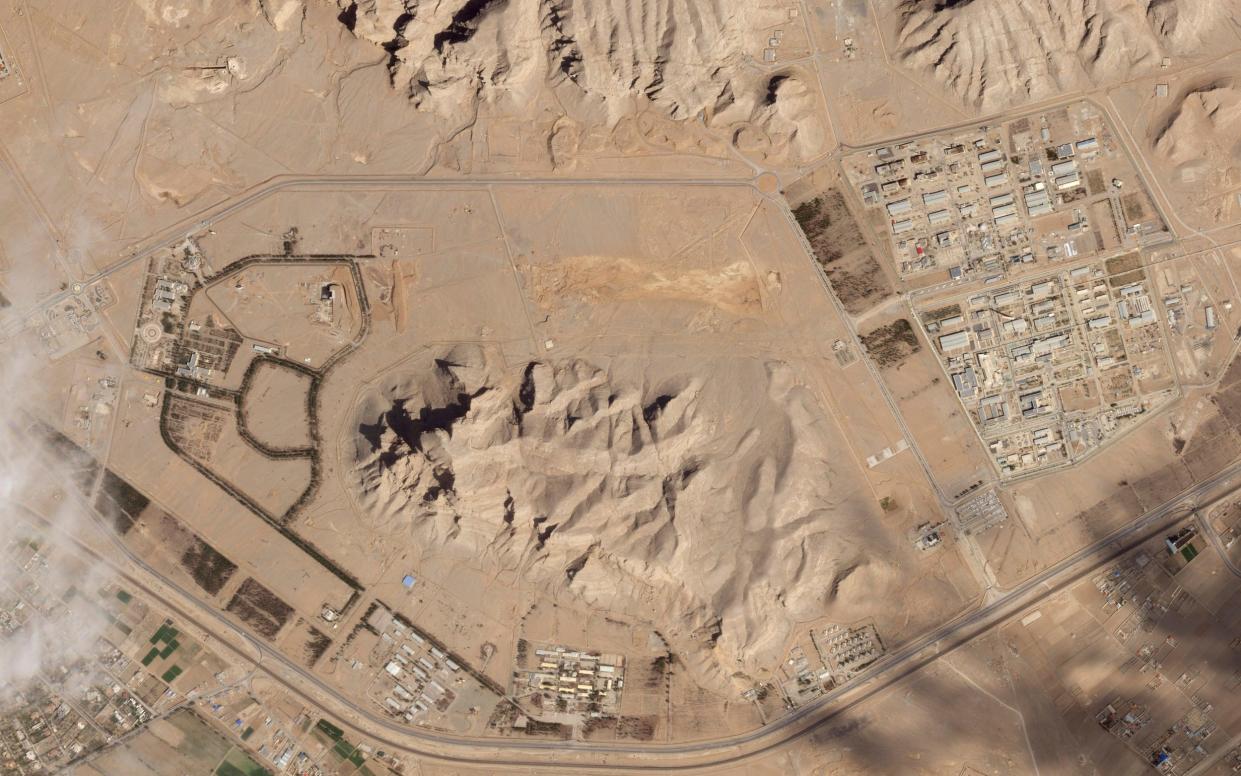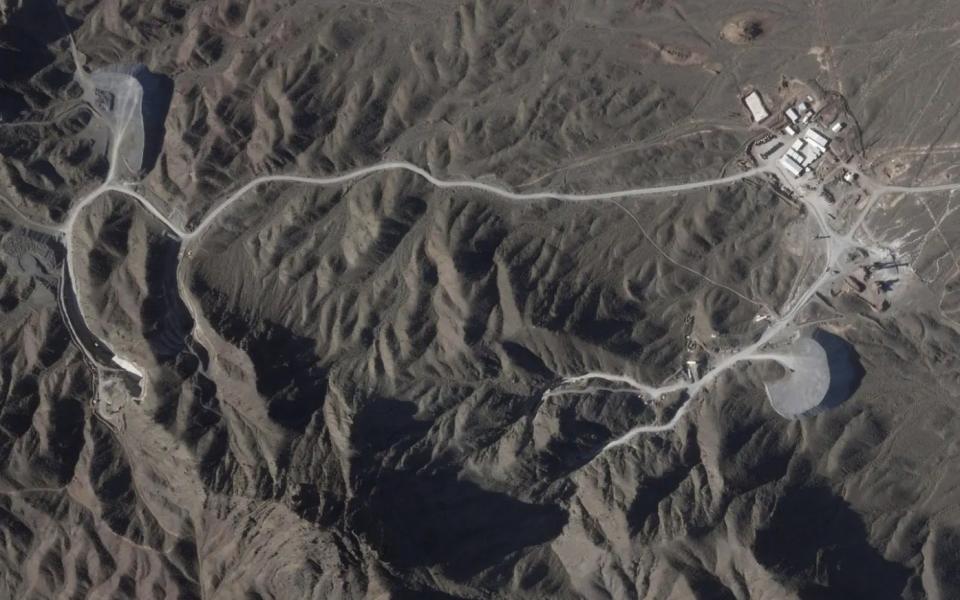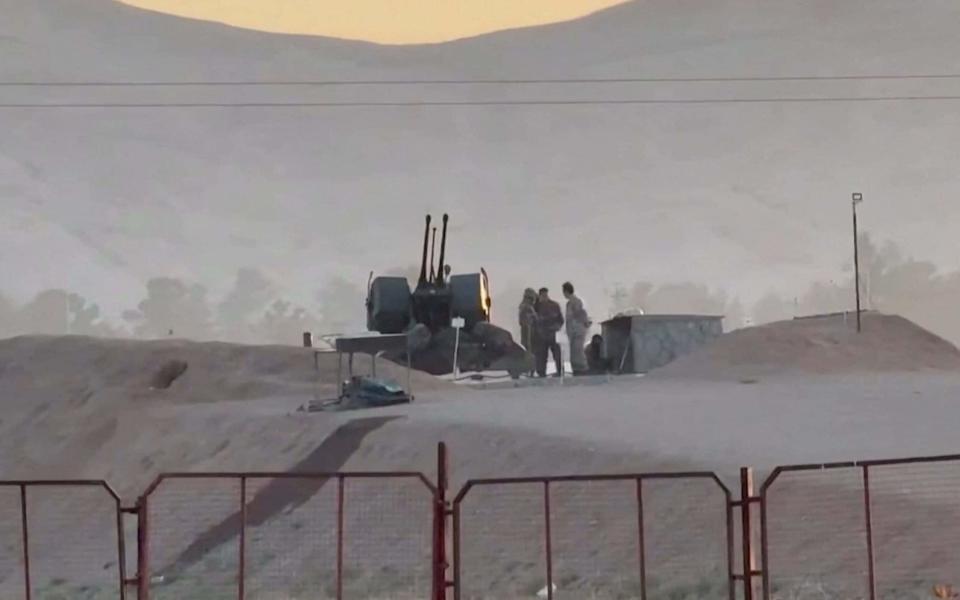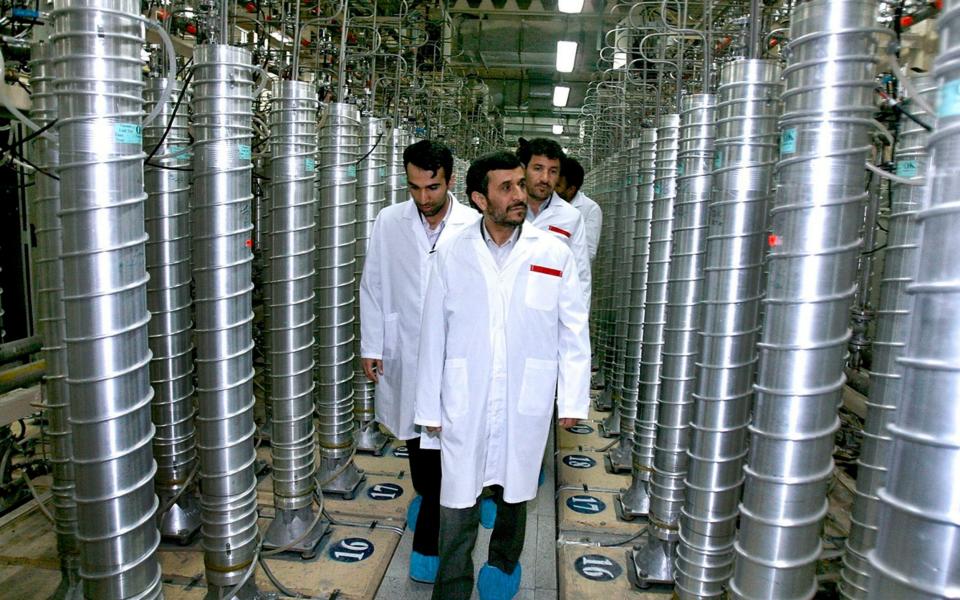Inside Iran’s top secret ‘nuclear energy mountain’

When explosions were heard in the Iranian province of Isfahan early Friday morning the thoughts of many Middle East watchers turned to a very particular target.
The Natanz complex, Iran’s primary uranium enrichment facility, has been the subject of deepening Western interest as Iran seeks to expand its nuclear abilities.
The Nuclear Threat Initiative, a non-profit security organisation, estimates that the Natanz complex itself consists of three underground buildings, two of which are designed to hold 50,000 centrifuges. Six buildings are above ground, two of which are 2,500-metre halls used for gas centrifuge assemblies.
As of October 2022, Iran had installed 4,000 advanced centrifuges at its various enrichment facilities, a 44 per cent increase in a matter of months, according to a report by the Institute for Science and International Security.
Then, last year, satellite imagery suggested that Iran was digging tunnels in the mountains near its primary Natanz nuclear site, building a new complex so deep underground that experts have worried it would be difficult to target and destroy in air strikes.
The Iranian regime swiftly denied that Friday’s Israeli attacks had hit the site.
The Natanz facility, located in Iran’s central plateau and flanked by the Zagros mountains to the west, is protected by anti-aircraft batteries, perimeter fencing, and Iran’s feared Revolutionary Guard Corps.
Natanz itself has long been of concern on the global stage over the advancement of Iran’s nuclear program.
It is believed to operate three small Chinese-supplied research reactors, as well as handling fuel production and other activities for Iran’s civilian nuclear program. But some experts believe that Iran is hiding efforts to build a nuclear bomb.
Images taken in April 2023 by Planet Labs PBC showed Iran burrowing into the Kuh-e Kolang Gaz La, or “Pickaxe Mountain,” just beyond the south fence that surrounds the original Natanz site.


Four entrances were dug into the mountainside, according to a different set of images analysed by the James Martin Center for Nonproliferation Studies and provided to the Associated Press in 2023.
It is unclear how far along that project is, given the secrecy surrounding Iran’s nuclear activities, especially as the regime restricts the access of international inspectors to its facilities.
But the size of the construction project could allow Iran to use the facility to enrich uranium, as well as to build centrifuges. Additional centrifuges would allow Iran the ability to more quickly enrich uranium deep inside the mountain, away from prying eyes and satellites.
The expansion at Natanz could have been dug even deeper underground than that of Iran’s other major nuclear enrichment site, Fordow.
In 2020, Behrouz Kamalvandi, a spokesperson for the Atomic Energy Organization of Iran said that a new and more advanced structure would be built at Natanz to replace one damaged in a fire, according to Iranian state media.
At the time, Tehran blamed Israel for the incident, which Kamalvandi said caused “significant damage,” but didn’t result in any casualties. Iran didn’t divulge further details “because of security reasons”.
The following year, Natanz suffered a blackout, an attack also believed to have been perpetrated by Israel.
Israel has long been suspected of running sabotage operations against Iran’s nuclear program, including via cyberattacks, physical strikes, and even assassinations of top Iranian nuclear scientists.

Iran’s other major nuclear site, Fordow, is located more than 100 miles north of Natanz, and is buried in a mountain near the city of Qom. In March 2023, the IAEA reported that it had discovered uranium enriched to 83.7 per cent purity, which is a very close to the 90 per cent weapons-grade.
Efforts to restrain Iran from expanding its nuclear stockpile halted after former US president Donald Trump pulled out of an accord in 2018.
Iran is believed to have enough highly enriched nuclear fuel that could be potentially used to make three atomic weapons, though making a bomb that it could deliver is a more complicated endeavour.
Some experts think that could take a year or more, though as Iran restricts what is known of its nuclear activities it is hard to accurately gauge capabilities.
As of February 10, Iran’s total enriched uranium stockpile was at 5,525.5 kilograms, an increase of 1,038.7 kilograms from the previous quarter, the International Atomic Energy Agency estimated in its most recent quarterly report.
According to that assessment, Iran has an estimated 121.5 kilograms of uranium enriched up to 60 per cent purity, which could be enriched further to weapons-grade uranium at 90 per cent.
Several Iranian nuclear sites are located in Isfahan province. The province is also home to a major missile production complex.

